Areca (Dypsis lutescens)
The Areca Palm, scientifically known as Dypsis lutescens, is a graceful and popular palm native to Madagascar. Often referred to as the Butterfly Palm or Golden Cane Palm, it is cherished for its feathery, arching fronds and its ability to add a tropical flair to any indoor or outdoor space. Its slender, cane-like stems and lush foliage make it an excellent choice for both residential and commercial landscaping.
- Botanical Name: Dypsis lutescens
- Common Name: Areca Palm, Butterfly Palm, Golden Cane Palm
- Mature Height: 6-10 feet (1-3 meters)
- Mature Spread: 3-5 feet (1-1.5 meter)
- Growth Rate: Moderate
- Light Requirements: Bright, indirect light; can tolerate low light conditions
- Soil Requirements: Well-draining soil; prefers sandy or loamy soils
- Water Needs: Moderate; prefers consistently moist soil but can tolerate brief dry periods
- Foliage: Evergreen, feathery, arching fronds with a bright green color
- Trunk: Slender and cane-like, often covered with a smooth surface and ring patterns from leaf scars
Uses:
- Ornamental: Adds a lush, tropical touch to indoor spaces, gardens, and landscapes.
- Container Planting: Ideal for growing in pots or containers, making it suitable for patios, balconies, and indoor environments.
- Indoor Decoration: Popular as a houseplant due to its elegant appearance and air-purifying qualities.
Benefits:
- Elegant Appearance: The feathery, arching fronds and slender stems create a sophisticated and tropical look.
- Low Maintenance: Requires minimal care once established and adapts well to indoor and outdoor conditions.
- Air Purification: Helps improve indoor air quality by filtering pollutants and releasing oxygen.
- Versatile: Suitable for a range of planting scenarios, including container gardening and ground cover.
The Areca Palm (Dypsis lutescens) is a beautiful and versatile palm that enhances any setting with its graceful form and tropical charm. Its adaptability to various lighting conditions and minimal care requirements make it a popular choice for both indoor and outdoor spaces.
Debes acceder para publicar una valoración.
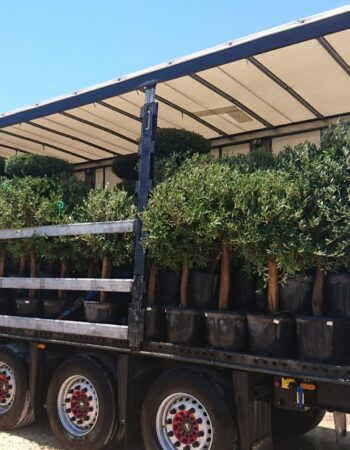
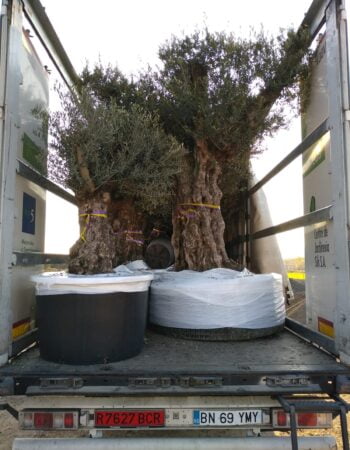
CAREFUL TREE TRANSPORTATION
At Treezom, we take great care in transporting your trees to ensure they arrive in perfect condition. Our expert team uses various methods, depending on the size and volume of the order, to provide safe and efficient delivery. Whether you're ordering a single tree or a bulk order, we guarantee high standards of handling and care throughout the process.
MULTIPLE SHIPPING METHODS
- Truck Delivery: Ideal for local or regional deliveries, ensuring a smooth and timely shipment of your trees directly to your location.
- Sea Containers (20’ or 40’): Perfect for larger orders or international shipping. Our sea containers are equipped to handle bulk shipments with optimal protection.
- Other Customized Solutions: Depending on the size and nature of your order, we can offer tailored shipping methods to meet your specific needs.
No matter the shipping method, we use specialized packaging and handling procedures to protect the trees during transit, ensuring they arrive healthy and ready for planting.
Below, you’ll find key tips tailored to this species’ requirements. Whether you’re new to plant care or have plenty of experience, these guidelines are here to support you in keeping your green companion healthy and vibrant.
- Planting:
- Choose a location with bright, indirect light for indoor settings or filtered sunlight for outdoor areas.
- Use well-draining soil and ensure proper drainage to avoid waterlogged conditions.
- Dig a hole twice the width of the root ball and equal in depth, place the palm in the hole, backfill with soil, and water thoroughly.
- Watering:
- Water regularly to keep the soil consistently moist, especially during the growing season.
- Allow the top inch of soil to dry out between waterings to prevent overwatering.
- Pruning:
- Remove dead or yellowing fronds to maintain a clean appearance and promote healthy growth.
- Prune in late winter or early spring before new growth begins.
- Fertilizing:
- Apply a balanced, slow-release fertilizer designed for palms or general houseplants in early spring and mid-summer.
- Follow the manufacturer’s instructions for application rates.
- Pest and Disease Control:
- Monitor for pests such as spider mites, scale insects, and mealybugs.
- Use appropriate treatments to manage infestations.
- Ensure good air circulation around the plant to prevent fungal diseases and avoid overwatering.
*This information is provided for informational purposes only. For more detailed care, please consult a professional Gardener or Arborist.


 SINGLE TREE
SINGLE TREE OUTDOOR POTS
OUTDOOR POTS


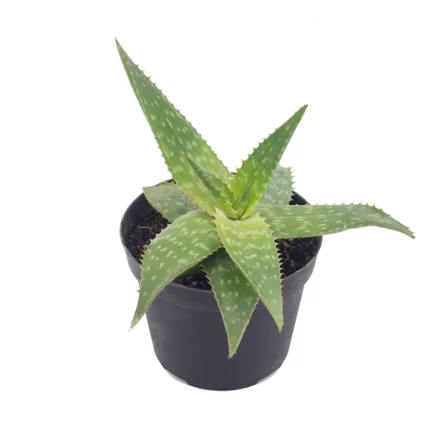

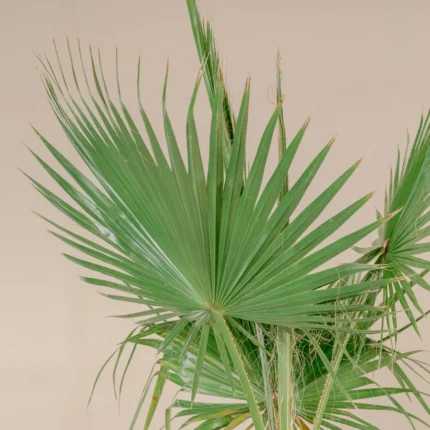

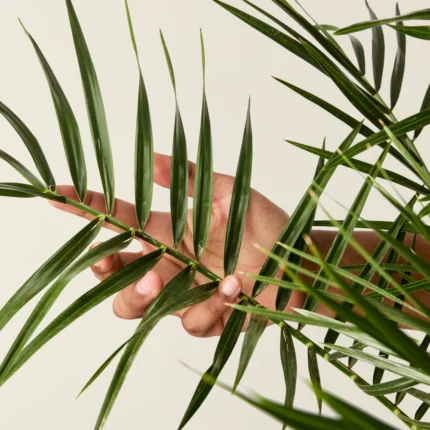






 Single Tree
Single Tree
Valoraciones
No hay valoraciones aún.